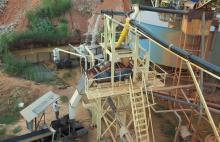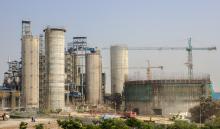Birla Corporation (Birla), a leading Indian cement producer, posted a 14% rise year-on-year revenue rise in the first quarter of the 2019/20 financial year to INR 18.44 billion (US$249.1mn). In the three months to 30 June 2019, Birla’s fiscal earnings before interest, taxes, depreciation, and amortisation (EBITDA) by 49% to INR 4.02bn ($56.07mn), while its net profit rose 68% to INR 1.41bn ($19.75mn).
In a company statement released with its latest trading results, Birla says it is now looking to invest more in Perfect Plus, the firm's new flagship brand, as it plans to increase its profits by focusing more on premium cement brands. In the 1 March to 30 June quarter, several premium brands had been launched by the company. It introduced Ultimate Ultra in central India zone, while MP Birla Ultimate and Perfect Plus were rolled out in northern India. The company's premium cement brand portfolio accounted for 37% of its cement sales in the analysed quarter.
The Cement Division of Birla Corporation Limited has 10 plants at seven locations, Satna & Maihar (Madhya Pradesh), Raebareli & Kundanganj (Uttar Pradesh), Chanderia (Rajasthan), Butibori (Maharashtra) and Durgapur (West Bengal).
They manufacture varieties of cement like Ordinary Portland Cement (OPC), 43 & 53 grades, Portland Pozzolana Cement (PPC), fly ash-based PPC, Low Alkali Portland Cement, Portland Slag Cement (PSC), Low Heat Cement and Sulphate Resistant Cement.
Commenting on Birla’s Q1 2019/2020 performance, chairman Shri Harsh V Lodha said: “The results are a reflection of our long-term strategy of enhancing profitability and competitiveness with the aim of becoming one of the best-in-class players in the industry. We have also increased our leadership bench strength and built all-round competencies in preparation for our next phase of growth.”
Touching on the company’s future outlook, he added: “Birla Corporation is well positioned to take part in the next phase of growth expected through high level of investments in rural housing and infrastructure, affordable urban housing, smart cities and the cascading effects of shoring up mega infrastructure in its principal markets.”








